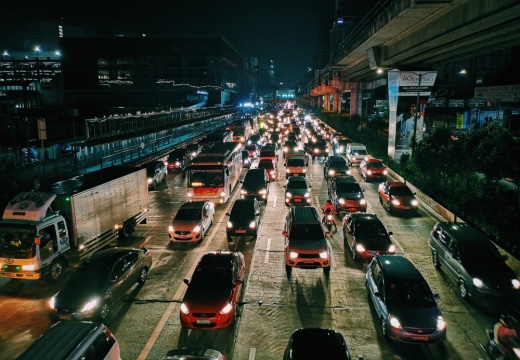Of the 1,860 roadways, TTI determined the top 100 highest trafficked roads by analyzing the delay per mile of travel—or how much longer it took motorists to travel on a gridlocked road than to make the same trip in uncongested conditions—according to a Nov. 28 press release. Per the study, the financial burden of congestion factors both lost time and wasted fuel.
David Schrank, TTI’s lead researcher on the analysis that is funded by the Texas Department of Transportation, said traffic congestion will likely get worse as the population surges by nearly 20 million in the next 25 years.
“With that kind of growth, Texas needs to use every possible means to keep people and goods moving,” Schrank said. “We need to add capacity, operate the system efficiently and give people options for how to travel.”
Grand Parkway, between Fry Road and Morton Road came in as the 53rd most congested roadway, 10 places higher than in 2020. For this segment of road, the annual cost of congestion was $29.24 million, with 175,151 annual hours of delay per mile.
Corridor-specific projects planned for this segment of Grand Parkway include capacity expansion, the installation of intelligent transportation systems, intersection and operation improvements, and signal operations and management.
Moving from 409th place in 2020 to 81st place in 2021 was North Fry Road between FM 529 and Katy Freeway. The study counted 137,007 hours of delay in 2021 and recorded $21.76 million in congestion costs.
As a new addition to the top 100, no mitigation projects are planned for this roadway.
Finally, a segment of I-10 between Grand Parkway and North Eldridge Parkway dropped from 53rd place in 2020 to 85th place in 2021. The annual congestion cost totaled $33.02 million with a recorded 130,572 hours of delay per mile.
Projects for this corridor will address capacity expansion, grade separation, managed lanes and intersection improvements.
Strategies to improve mobility will require road building and at a swift pace, researchers said. TxDOT’s Texas Clear Lanes initiative, launched in 2015, is meant to supply dollars towards this end.
In 2021, $29 billion was assigned to Texas Clear Lanes nontolled projects in the four largest metro regions. Since 2015, 13 projects have been completed; 27 are under construction; and another 58 projects are planned.
TxDOT Executive Director Marc Williams said in the press release that the agency estimates $4 in benefits for every $1 spent on road expansion projects.
“That helps us achieve our mission—connecting Texans with their state,” Williams said in a statement. “TxDOT is all about making personal travel safer and smoother, along with efficiently moving freight to support greater supply chain efficiency and economic growth.”





